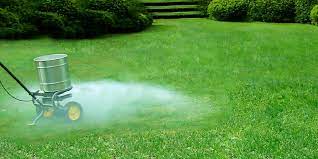introduction
Lush, vibrant lawns are often the pride of homeowners and the delight of anyone who appreciates the beauty of well-maintained green spaces. Achieving and maintaining such a lawn is a rewarding endeavor, and it often begins with understanding the role of lawn fertilizers. In this note, we'll explore the world of lawn fertilizers, why they are essential for a healthy lawn, and how to use them effectively to keep your grass green and thriving.
Nutrient Supply
-
Growth and Greening: Nitrogen, in particular, is responsible for promoting vigorous leaf and stem growth. Adequate nitrogen levels result in lush, green grass that enhances the beauty of your outdoor space.
-
Root Development: Phosphorus supports root development, making your lawn more resilient to environmental stresses like drought or extreme temperatures.
-
Disease Resistance: Potassium strengthens the grass, making it more resistant to diseases and pests, and helping it better withstand foot traffic.
-
Seasonal Adjustments: Lawn fertilizers can be tailored to suit different seasons and specific needs, providing your grass with the appropriate nutrients at the right time.
Types of Lawn Fertilizers
-
Granular Fertilizers: These are solid, slow-release fertilizers that are applied to the lawn with a spreader. They release nutrients gradually, providing long-lasting nourishment.
-
Liquid Fertilizers: These are mixed with water and applied directly to the lawn through a sprayer. Liquid fertilizers are quickly absorbed by the grass and offer more immediate results.
-
Organic Fertilizers: Made from natural materials like compost, bone meal, or manure, organic fertilizers improve soil health and are environmentally friendly.
-
Synthetic Fertilizers: These are chemically formulated fertilizers, often with precise NPK ratios. They provide quick results but should be used with care to prevent over-application.
Using Lawn Fertilizers Effectively
-
Soil Testing: Conduct a soil test to determine your lawn's nutrient needs. This will help you select the right fertilizer and application rate.
-
Seasonal Timing: Apply fertilizers at the appropriate time of year. Early spring and early fall are often ideal for most lawns, with additional applications as needed.
-
Even Application: Use a spreader for granular fertilizers, and ensure even coverage. For liquid fertilizers, follow the recommended dilution rates and application methods.
-
Watering: After applying fertilizer, water your lawn to help the nutrients penetrate the soil and reach the roots. This also reduces the risk of burning the grass.
-
Follow Instructions: Always follow the manufacturer's instructions on the fertilizer package regarding application rates and safety precautions.
-
Aeration: Periodically aerate your lawn to improve nutrient uptake by loosening compacted soil.
Conclusion
Lawn fertilizers are the secret ingredient behind the lush, healthy lawns that turn ordinary backyards into green oases. When used wisely, they ensure your grass receives the essential nutrients it needs to grow strong, green, and resilient. So, the next time you marvel at a beautifully manicured lawn, remember that it's often the result of a well-thought-out fertilization regimen, nurturing nature's beauty from below the surface.


No comments yet